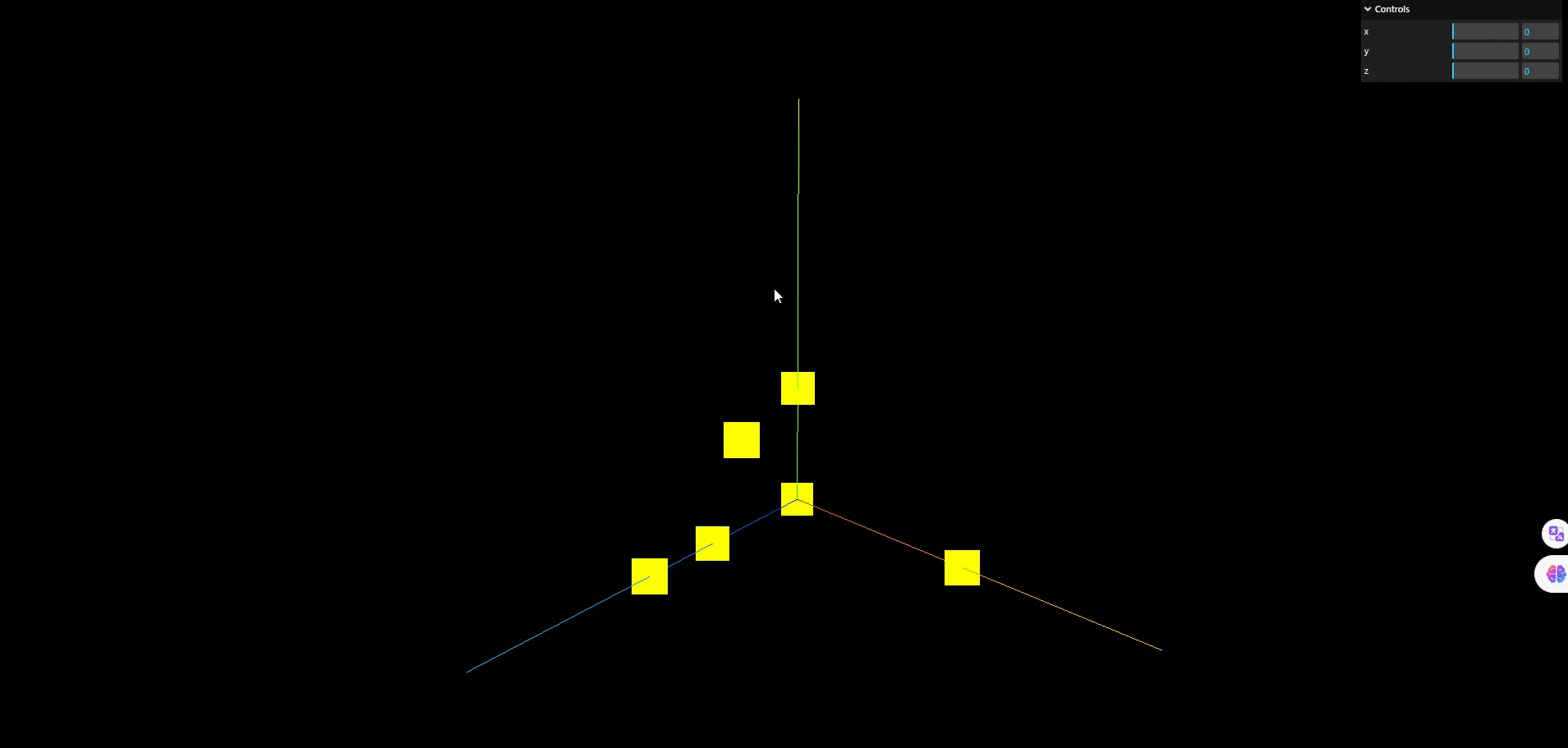缓冲类型几何体: BufferGeometry
threejs 中的长方体 BoxGeometry,球体 SphereGeometry 等几何体都是基于 BufferGeometry 这个类所构建的.
BufferGeometry 是一个没有任何形状的空几何体,你可以通过 BufferGeometry 自定义任何几何形状,具体一点说就是定义顶点的数据.
js
// 创建一个空的几何体对象
const geometry = new THREE.BufferGeometry();定义几何体的顶点数据:BufferAttribute
通过 JavaScript 类型化数组 Float32Array 创建一组 xyz 坐标数据,用来表示所创建几何体的顶点坐标.
js
const vertices = new Float32Array([
0,
0,
0, //顶点1坐标
50,
0,
0, //顶点2坐标
0,
100,
0, //顶点3坐标
0,
0,
10, //顶点4坐标
0,
0,
100, //顶点5坐标
50,
0,
10, //顶点6坐标
]);通过 threejs 的属性缓冲区对象: BufferAttribute 来表示所创建几何体的顶点数据.
js
// 创建属性缓冲区对象
// 3个为一组,表示一个顶点的xyz坐标
const attribute = new THREE.BufferAttribute(vertices, 3);设置几何体顶点: geometry.attributes.position
通过 geometry.attributes.position 来设置所创建几何体顶点位置属性的值(BufferAttribute)
js
// 设置几何体attributes属性位置的属性
geometry.attributes.position = attribute;点模型
点模型 Points 和网格模型 Mesh 一样,都是 threejs 的一种模型对象,只是大部分情况下都会使用 Mesh 表示物体.
网格模型 Mesh 有自己对应的网格材质,点模型 Points 也有自己对应的网格材质 PointsMaterial
js
// 点材质
const material = new THREE.PointsMaterial({
color: 0xffff00,
size: 10.0, // 设置点的大小
});几何体 geometry 作为点模型 Points 参数,会将几何体渲染为点,把几何体作为 Mesh 的参数会将几何体渲染为面.
js
const points = new THREE.Points(geometry, material); // 点模型对象完整代码
model.js
js
import * as THREE from 'three';
// 创建一个空的几何对象
const geometry = new THREE.BufferGeometry();
// 定义类型化数组用于创建顶点
const vertices = new Float32Array([
0,
0,
0, //顶点1坐标
50,
0,
0, //顶点2坐标
0,
30,
0, //顶点3坐标
0,
0,
30, //顶点4坐标
0,
0,
50, //顶点5坐标
10,
30,
30, //顶点6坐标
]);
// 创建属性缓冲区对象
const attribue = new THREE.BufferAttribute(vertices, 3); // 3个为一组,表示一个顶点的xyz坐标
// 设置几何顶点
geometry.attributes.position = attribue;
// 点渲染模式
const material = new THREE.PointsMaterial({ color: 0xffff00 });
material.size = 30;
const points = new THREE.Points(geometry, material);
export default points;index.js
js
import * as THREE from 'three';
import { OrbitControls } from 'three/addons/controls/OrbitControls.js';
import PointsModel from './model.js';
import { GUI } from 'three/addons/libs/lil-gui.module.min.js';
const width = window.innerWidth;
const height = window.innerHeight;
const scene = new THREE.Scene();
scene.add(PointsModel);
const camera = new THREE.PerspectiveCamera(30, width / height, 0.1, 1000);
camera.position.set(200, 200, 200);
const renderer = new THREE.WebGLRenderer();
renderer.setSize(width, height);
const render = () => {
renderer.render(scene, camera);
window.requestAnimationFrame(render);
};
render();
const axesHelper = new THREE.AxesHelper(100);
scene.add(axesHelper);
new OrbitControls(camera, renderer.domElement);
const gui = new GUI();
gui.add(PointsModel.position, 'x', 0, 100);
gui.add(PointsModel.position, 'y', 0, 100);
gui.add(PointsModel.position, 'z', 0, 100);
console.log(PointsModel);
document.body.appendChild(renderer.domElement);
window.onresize = () => {
renderer.setSize(window.innerWidth, window.innerHeight);
camera.aspect = window.innerWidth / window.innerHeight;
camera.updateProjectionMatrix();
};效果

 zhangxinxin
zhangxinxin